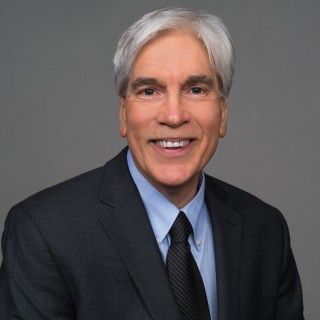Benralizumab Beneficial for High Eosinophil, Uncontrolled COPD Patients
New follow-up data shows older patients with COPD characterized by high blood eosinophil counts may benefit from the biologic.

Gerard J. Criner, MD
Investigators have identified a subpopulation of patients with chronic obstructive pulmonary disease (COPD) who may benefit in symptom reduction with 100 mg benralizumab (FASENRA).
New analyses of nearly 4000 patients included in the phase 3 GALATHEA and TERRANOVA trials showed clinical and physiological characteristics of patients with COPD, including elevated blood eosinophil counts, could indicate which patients could benefit most from severe asthma-indicated monoclonal antibody.
Investigators, led by Gerard J. Criner, MD, of the Lewis Katz School of Medicine at Temple University, conducted the AstraZeneca-funded assessment of 3910 adults with COPD who received benralizumab in either the GALATHEA or TERRANOVA trial.
At study enrollment, patients were 40-85 years old, with reported moderate to very severe airflow limitation and elevated blood eosinophil counts. Patients had ≥2 exacerbations or 1 severe exacerbation in the past year while on dual inhaler therapy (inhaled corticosteroid [ICS] plus long-acting beta2 agonists [LABA] or LABA plus long-acting muscarinic antagonists [LAMA]).
In these patients during the 2 previous trials, they were administered 30 mg or 100 mg subcutaneous benralizumab every 8 weeks, with the first 3 doses every 4 weeks, along with triple therapy (ICS+LABA+LAMA). The regimen did not significantly reduce exacerbations versus placebo.
They assessed for a primary endpoint of annual exacerbation rate for benralizumab versus placebo, with intent to identify the particularities of patients with COPD who had the greatest treatment effect.
Treatment effect was observed to be greater among patients given 100 mg benralizumab than 30 mg—particularly among patients with a more frequent exacerbation history, poorer baseline lung function, or greater baseline lung function improvement when treated with short-acting bronchodilators.
Rate ratio (RR) among 100 mg- and 30 mg-treated patients with baseline blood eosinophil counts of ≥220 cells per uL and ≥3 exacerbations in past year were .69 (95% CI, 0.56-0.83) and .86 (95% CI, 0.71-1.04) versus placebo, respectively.
Among patients with post-bronchodilator forced expiratory volume over 1 second (FEV1) ≤40%, RRs were .76 (95% CI, 0.64-0.91) and .90 (95% CI, 0.76-1.06) versus placebo, respectively.
In patients with ≥15% post-bronchodilator response, RRs were .67 (95% CI, 0.54-0.83) and .87 (95% CI, 0.71-1.07), respectively.
Criner and colleagues noted that, when the combined factors above were assessed, patients who were likely to benefit from benralizumab 100 mg every 8 weeks versus placebo included:
- Patients with elevated blood eosinophil counts
- Patients with ≥3 exacerbations in the past year
- Patients who were receiving triple therapy
Such patients reported a RR of .70 (95% CI, 0.56-0.88). Bernalizumab 30 mg every 8 weeks was not shown to benefit patients with such criteria, versus placebo (RR .99; 95% CI, 0.79-1.23).
Experts frequently stress the importance of reducing exacerbation frequency and severity in patients with COPD—though it’s not often expected a drug such as benralizumab would play that role.
In an interview with HCPLive®, Al Rizzo, MD, chief medical officer of the American Lung Association, noted asthma inflammation-targeting drug classes including biologics have been particularly studied in COPD patients with high eosinophil counts.
Though there are no such approved drugs for COPD yet, a patient could benefit from a biologic such as benralizumab if their symptoms are uncontrolled despite ICS, LAMA, and LABA treatment.
“A number of the biologics that are being used in asthma have had studies or studies ongoing looking at a subset of individuals with COPD who may respond,” Rizzo said. “And in particular, that may include individuals who have a high eosinophil in their blood.”
Criner and colleagues concluded increased blood eosinophil plus the observed clinical characteristics identified a population of COPD patients wh would benefit from 100 mg benralizumab. They called for prospective evaluation of their findings in future clinical trials.
The study, “Predicting response to benralizumab in chronic obstructive pulmonary disease: analyses of GALATHEA and TERRANOVA studies,” was published online in The Lancet Respiratory Medicine.